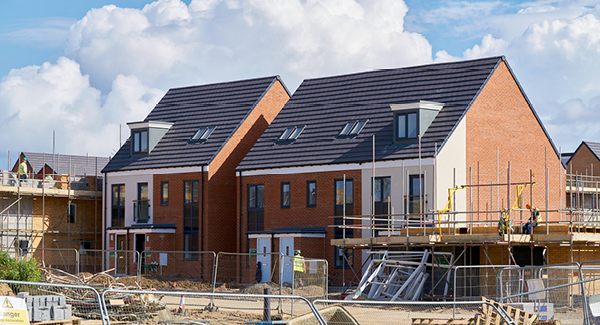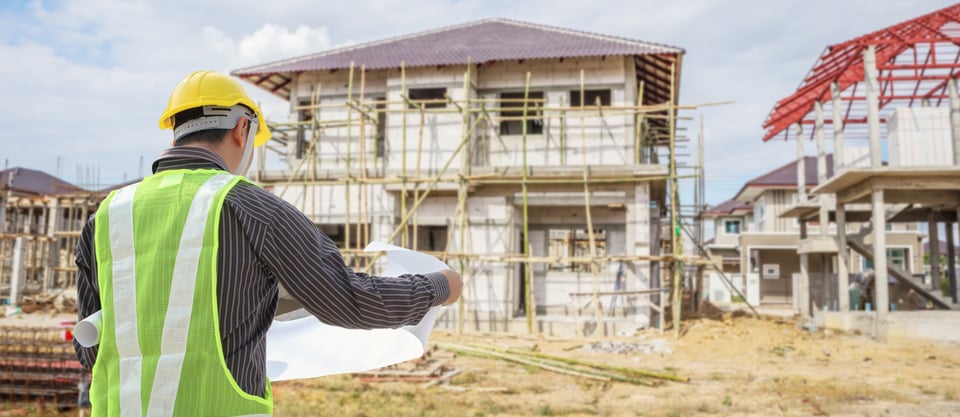
In 2021, an estimated 8.5 million people in England had some form of unmet housing need, according to the National Housing Federation.
From unaffordable to insecure to simply unsuitable, the rising range of housing issues is alarming. The most common in England? Overcrowding, impacting nearly 3.7 million people.
But England is not alone. The entire UK is in the midst of a serious housing crisis, with demand rising daily.
While plans are in place to combat the crisis, these may not be enough. With a growing range of technology solutions designed specifically for homebuilders, we’re digging into these tech tools and discussing those that can help build the homes required.

Government Plans to Attack Housing Crisis
In 2017, the UK pledged to create 300,000 homes a year by the mid-2020s—a figure which has yet to be met.
Priority has been placed on UK housing as part of the UK Government’s ‘Levelling Up’ plan. Here, the government is supporting the regeneration of 20 towns and cities, implementing an ‘80/20 rule’ with 80% of funding going to ‘maximum affordability areas.’ There is a commitment to build genuinely affordable social housing, and ensure all homes in the Private Rented Sector meet a minimum standard—the Decent Homes Standard.
Regional governments are also stepping up their plans:
- In Scotland, the ‘Housing to 2040’ plan sets out to deliver 100,000 affordable homes by 2031/32. This represents a total investment of approximately £16 billion and 12,000 to 14,000 jobs each year
- In Wales, the government plans to spend more than £1 billion on building new social homes over the next three years
- In Northern Ireland, the government plans to deliver more than 100,000 new homes over the next 15 years
To meet these targets and help combat the housing crisis, the UK construction industry needs to put its best foot forward. There are many obstacles standing in the way—materials shortage, skills shortage, and supply chain issues. Between finding enough skilled workers to do the job and the materials to construct the homes, there are few easy answers.

3 New Technologies Designed to Meet Demand
The big question is whether the industry will lean into innovative technologies to meet their housing targets. When used alongside traditional building methods, organizations can unleash new tech tools to meet demand safely and cost effectively.
With an abundance of construction tech out there, here are three technologies that could prove helpful in building more housing:
1. Ramping Up the Use of Modern Methods of Construction (MMC)
According to RICS, only 8% of homes built in the UK rely on MMC. While the figure could rise to 20% over the next ten years, it’s clear MMC is struggling to make its mark.
In early 2021, the UK Government launched a task force to accelerate the delivery of MMC housing in the UK. But what are the benefits?
Take modular homes, a prime example of MMC that has long been associated with offsite construction, i.e., moving construction of new homes from onsite to a factory setting.
Modular homes have several advantages: they can be built faster and more cheaply than traditional homes and produce less waste. Homes can be made in their entirety offsite, or prefabricated components can be developed for walls, floors, and roofs.
This also ensures that homes are assembled in strict quality-controlled conditions; every construction stage is documented, and component and lifecycle costs are easily managed.
Sustainability-focused and innovative methods of housebuilding are also open for discussion. Insulated Concrete Framework (ICF), timber frame homes, and ‘natural’ build materials are all alternative building routes available to the industry.
2. 3D Printed Houses
While it may be challenging to wrap your head around—a machine printing a house or a robotic arm producing the walls of a building—3D printing is making its mark in the construction industry. Primarily in housing.
In fact, according to The B1M and the World Economic Forum, 3D-printing houses are one of the top three pieces of construction tech to watch out for. The tech has a host of benefits, including being cost-effective, saving time, reducing waste, and supporting sustainability.
Multiple projects worldwide are already on board, including projects in the Netherlands, Dubai, and Austin, Texas. Is the UK next?
3. Project Management Software
With housing projects likely to cause shortages—most notably the skills shortage—tech can be the government's savior.
Construction technology is all about efficiency and helping you do more with less. If you can speed up the lifecycle phases using tech, it will be much easier to stay on schedule and rely on fewer workers.
The best answer is to create a Common Data Environment (CDE). It is a gamechanger for managing all project documents—from drawings to submittals to change orders—on a centralized, cloud-based platform.
Implementing this type of project management software can decrease the time it takes to perform a host of activities, increasing productivity and decreasing labor needs.

Case Study: How Redrow Homes Uses Technology
Redrow Homes is a great example of how the government can use tech to meet housing demand. They are at the forefront of the industry when it comes to embracing new technologies to support efficient and cost-effective design—all while not losing its traditional roots.
The uptake of offsite manufactured components used by Redrow Homes in their building projects is steadily increasing. The company seeks to improve productivity and reduce reliance on site-based workers after experiencing a 4% increase in build costs in 2018. However, the leading British homebuilder and construction company prides itself on hand-built products, using MMC when they see necessary. MMC is utilized for larger projects where offsite manufactured components can aid their skilled craftsmen on site.
Redrow Homes also embraced new technologies to ensure quality control and increase collaboration onsite by utilizing a cloud-based platform to identify faults and resolve them quickly and accurately.
The Asite Common Data Environment (CDE) is used across all Redrow Homes’ developments to provide a centralized repository. All project information can be stored, tracked, reviewed, and accessible to stakeholders. The implementation allows for better, more streamlined collaboration across the company’s 16 UK offices and 2,000+ staff members, and any external partners.
Want to learn how you can achieve the same success and reap the rewards of construction technology on your housing project? Find out how we can help; contact us at sales-ukeu@asite.com or +44 20 4579 0736.
4 minute read
Asite Insights in your inbox.
Sign up for product news and our latest insights published monthly. It's a newsletter so hot, even global warming can't keep up.


